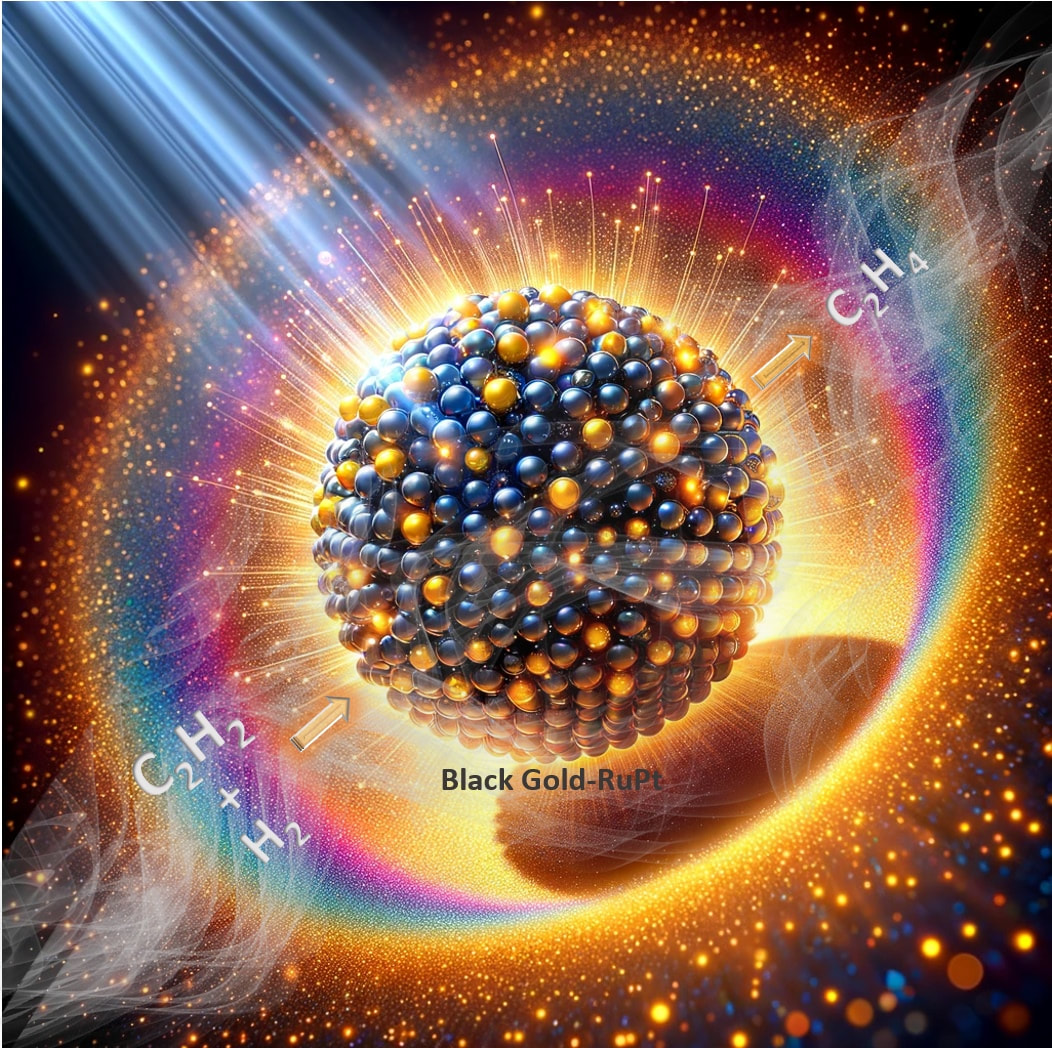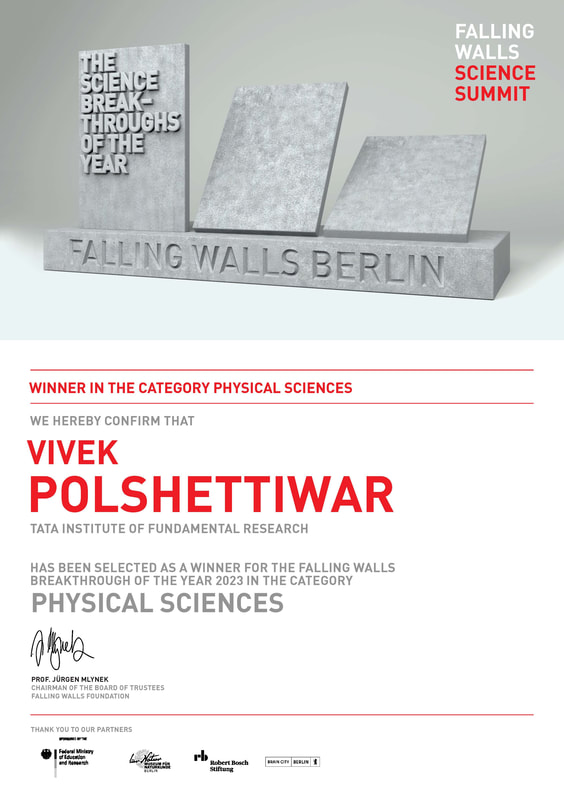In a significant breakthrough, Ms. Gunjan Sharma et al. in Prof. Polshettiwar’s group at TIFR, Mumbai have developed a novel "Plasmonic Reduction Catalyst Stable in Air," defying the common instability of reduction catalysts in the presence of air. The catalyst merges platinum-doped ruthenium clusters, with 'plasmonic black gold'. This black gold efficiently harvests visible light and generates numerous hot spots due to plasmonic coupling, enhancing its catalytic performance.
What sets this catalyst apart is its remarkable performance in the semi-hydrogenation of acetylene, an important industrial process. In the presence of excess ethene, and using only visible light illumination without any external heating, the catalyst achieved an ethene production rate 320 mmol g−1 h−1 with around 90% selectivity. This efficiency surpasses all known plasmonic and traditional thermal catalysts.
Surprisingly, this catalyst exhibits its best performance only when air is introduced alongside the reactants. This unique requirement leads to an unprecedented stability for at least 100 hours. The researchers attribute this to plasmon-mediated simultaneous reduction and oxidation processes at the active sites during the reaction.
Further enhancing our understanding of this catalyst, finite-difference time-domain (FDTD) simulations revealed a five-fold increase in the electric field compared to pristine DPC. This field enhancement, due to the near-field coupling between the RuPt nanoparticles and DPC, plays a crucial role in activating chemical bonds. The catalyst’s effectiveness is also evident in its kinetic isotope effect (KIE), which is larger under light than in darkness at all temperatures. This indicates the significant role of non-thermal effects alongside photothermal activation of the reactants. In-depth in-situ DRIFTS and DFT studies provided insights into the reaction mechanism over the oxide surface, particularly highlighting the role of intermediates in selectivity. The partially oxidized RuPt catalyst surface generates di-σ-bonded acetylene, which then transforms through several steps to produce ethene.
This research marks the first report of a highly efficient, air-stabilized, and plasmonically activated catalyst for acetylene semi-hydrogenation, with potential applications in a variety of other reduction reactions. The findings offer significant contributions to the understanding of plasmonic catalysis and pave the way for developing sustainable and energy-efficient catalytic systems. development.
https://www.nature.com/articles/s41467-024-44954-4



 RSS Feed
RSS Feed